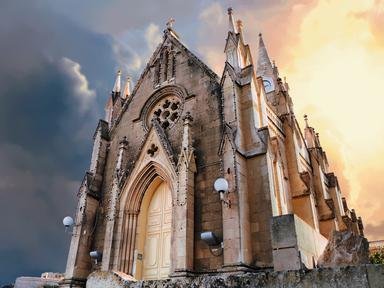Quiz Answer Key and Fun Facts
1. There are various seasons during the church year. Which season begins the church year?
2. There are special seasons of the church year and there is also "ordinary time". Which of the following festival days is followed by "ordinary time"?
3. As different colors are associated with different seasons of the church year, which color is used during Lent?
4. Holy Week is packed with different holidays and observances. Which of the following is NOT during Holy Week?
5. The church year puts aside different festivals for saints, to remember their example, or other minor events. These festivals are linked not with Sundays but actual calendar dates. Which festival occurs on June 24th?
6. Which of these factors does NOT influence the date Easter (for the Western church) falls on?
7. What Biblical event do Christians associate with the Day of Pentecost?
8. Which Christian holiday is related to the origins of Halloween?
9. The Transfiguration marks the Biblical event of when the appearance of Jesus changed so that his face shone and he was dressed brightly in white. What church day does the Transfiguration precede? (in the Lutheran and United Methodist tradition)
10. What Biblical event does the Sunday marking the Epiphany of Our Lord observe?
Source: Author
albinerhawk
This quiz was reviewed by FunTrivia editor
CellarDoor before going online.
Any errors found in FunTrivia content are routinely corrected through our feedback system.

